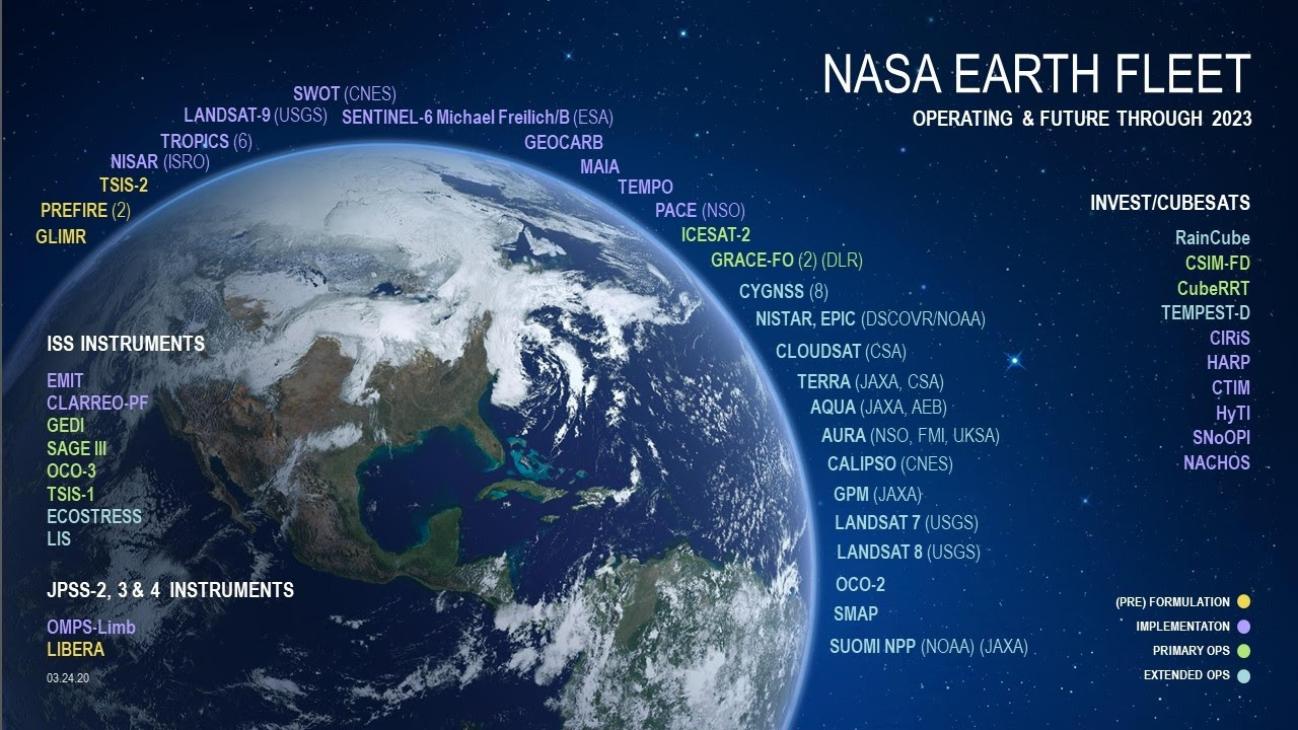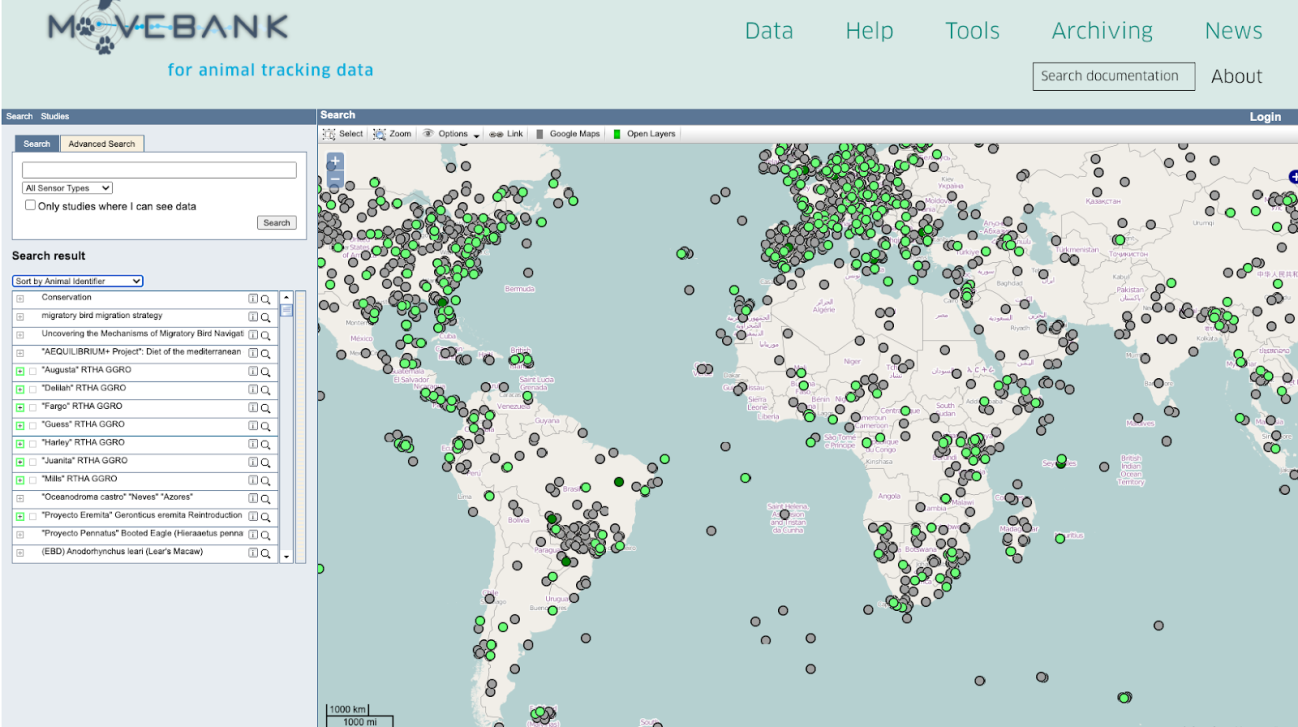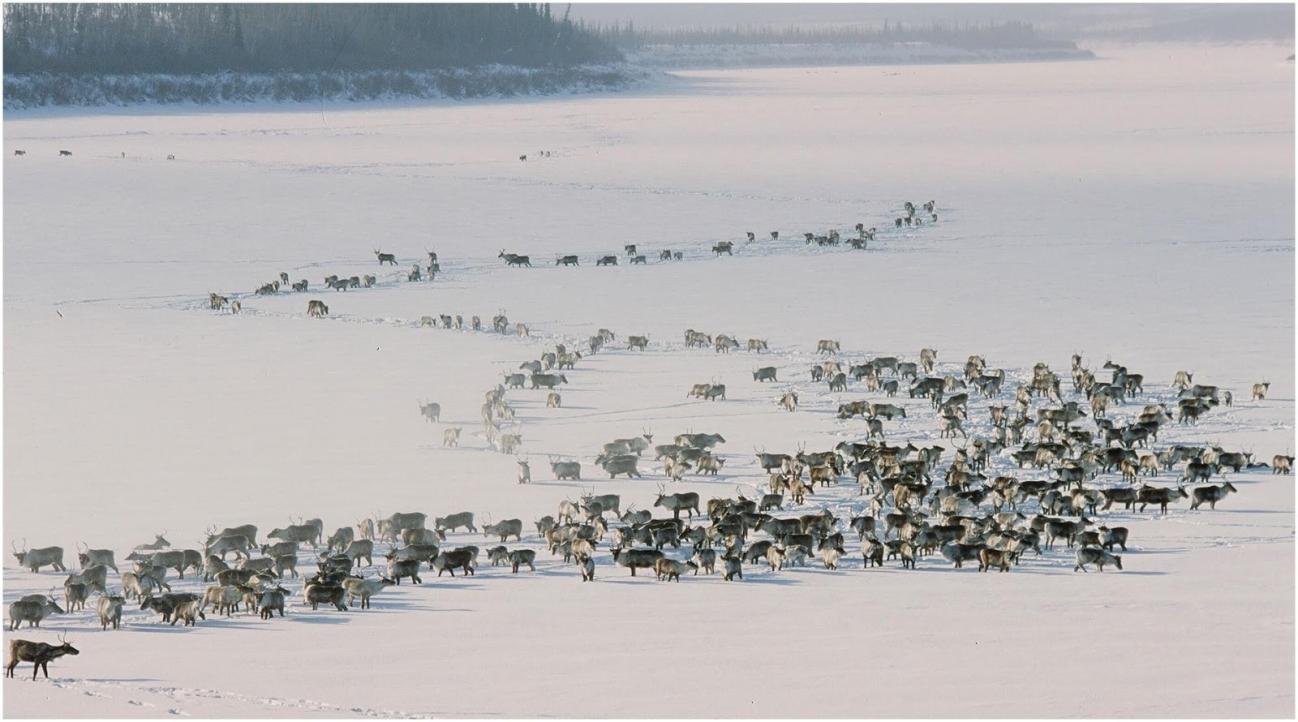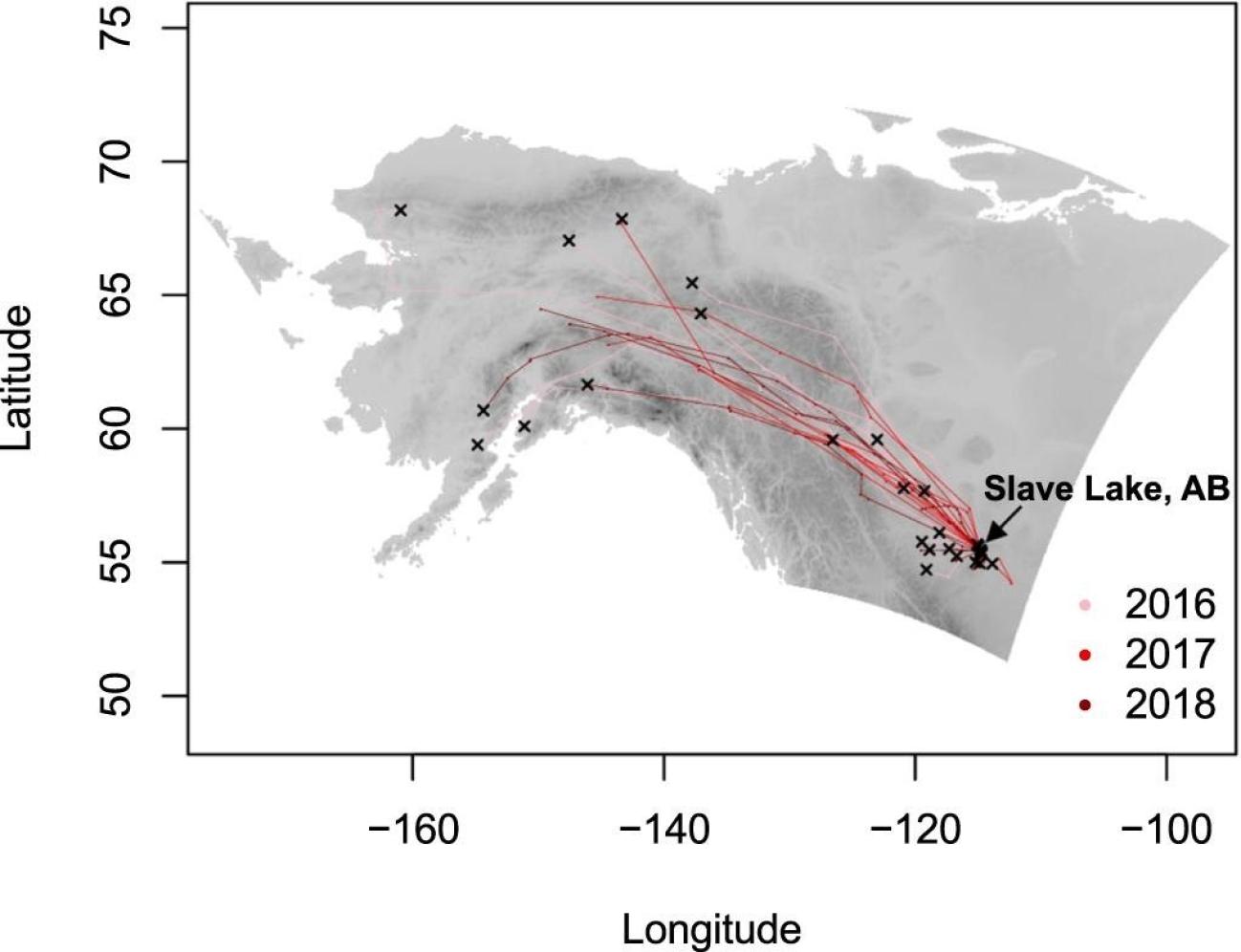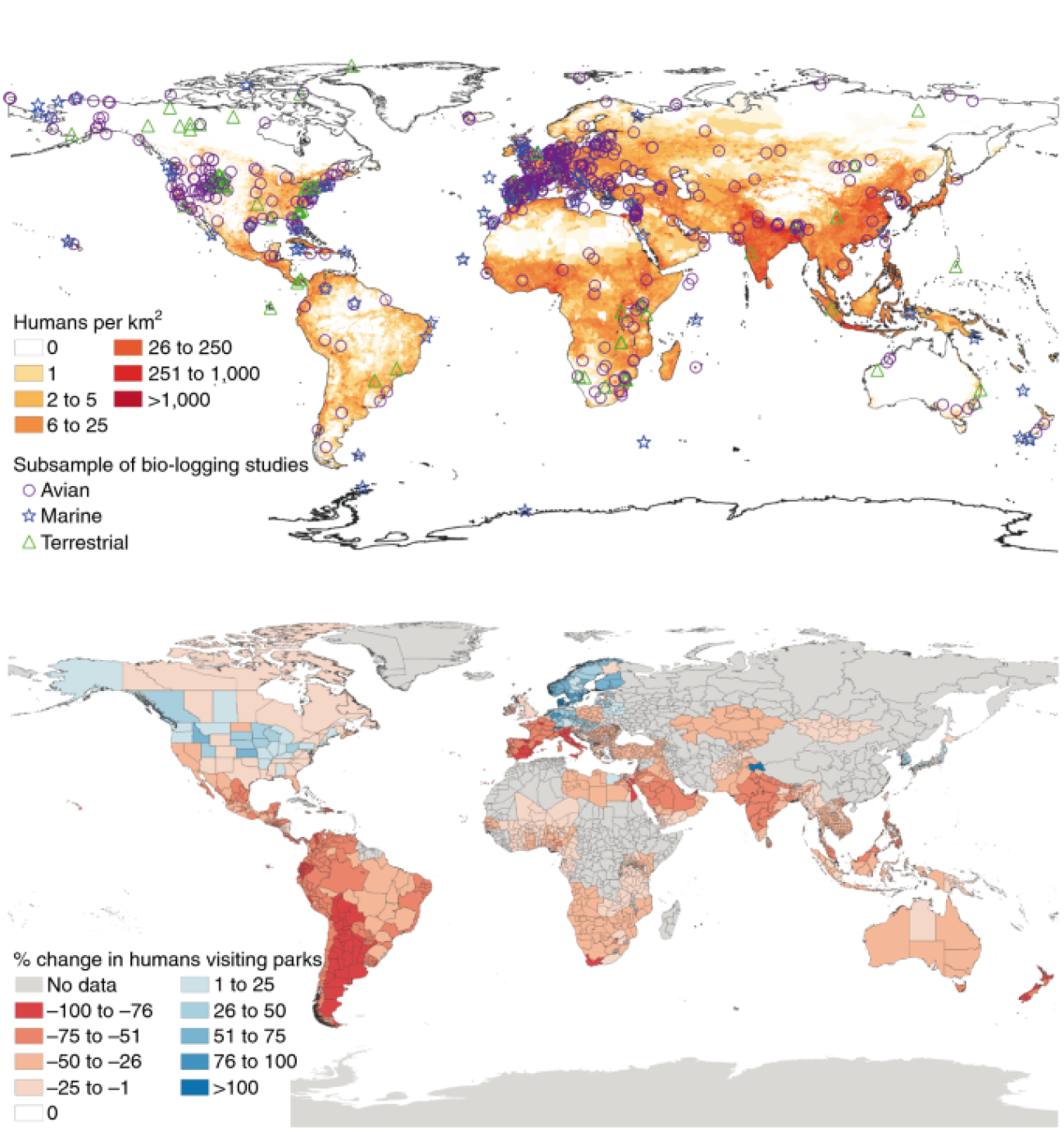
Bridging the Gap: Connecting Ecologists to Earth Data
Climate change increases need for global data
The impacts of climate change are already having a profound effect on ecosystems. Changes in temperature and precipitation patterns affect species and communities in diverse ways, such as declines in species and species diversity, changing interactions between species, and modification of ecosystems. Effective ecosystem management is critical to maintaining and repairing the natural environments in order to reliably support human needs while conserving and sustaining ecological services and diversity.
Imagine how a scientist studying the movement of animals might be interested in the impact of precipitation and other global environmental parameters on animal migration? While ecologists have many tools to use in the field, having access to global data sets greatly enhances their ability to better understand many of the factors involved in where and when animals migrate. Satellites from many countries collect and freely share their environmental data, which proves to be a huge benefit to helping improve life around the globe.
With a wealth of data literally at their fingertips, it can be rather daunting for researchers to know which data to use for their purposes. Fortunately, there are organizations responding to this emerging need to help untangle the web of available data and make it more accessible and user-friendly. Bridging the gap between the available data and the data end-user requires great communication skills as well as the ability to work with massive amounts of data and successfully translate the potential usability of these data. Data curators are excited about the immense possibilities for the data from NASA’s Earth observing satellite missions.
Movebank Researchers Gain Easy Access to GPM Data
Movebank provides a free online database that enables animal tracking researchers to manage, share, protect, analyze and store their data. The system includes a set of online tools that help ecologists link animal movement data with information from NASA and other Earth observing satellites, and view global environmental data, such as global precipitation and weather models. The project has over 20,000 users, and this number continues to grow as advances in technology allow the collection and analysis of increasingly high-resolution data. Having a wide range of data sets make it easier for ecologists to track animals and study their movement and distribution.
As one of Movebank’s data curators, Sarah Davidson is responsible for helping to design and test tools and provide support and training to help researchers make use of remote sensing data. Movebank works with many partners around the world and serves as a global archive for animal movement studies. One of the tools Sarah helped to develop that is frequently used by animal movement ecologists is the “Environmental Data Automated Track Association System” or “Env-DATA System”.
The Env-DATA System includes a set of free online tools which help ecologists link animal movement data with information from Earth observing satellites. Data from several NASA Earth observing satellites are integrated into this system, including GPM’s precipitation data. Using this system enables ecologists to investigate the questions about how animal movement and migrations are impacted by the environment around them. Scientists around the world are better able to address new ecological questions and can combine datasets in order to test theories related to ecological patterns, evolutionary processes, and disease spread.
As one of Movebank’s data curators, Sarah continually keeps an eye out for data that will enable animal researchers to conduct their research more effectively. She found that researchers sometimes don’t realize they have a question about precipitation until they see the global data sets that are available to them. Integrating GPM data with the other freely available data that she and her team have pulled together does require a lot of work behind the scenes, as they need to ensure that the researchers will be able to compare and find relationships between data that have different spatial and temporal resolutions. Sarah develops metadata which include the descriptive information that the researchers can use as they browse to see the data that are available and refine their hypotheses or come up with different predictions. This saves researchers a lot of valuable time because they can use the Env-DATA System tool to look at precipitation from several different sources and look for potential cause and effect relationships.
Impacts of Climate and Weather on Caribou
An example of the work being done by Movebank ecologists includes the research study entitled “Tactical departures and strategic arrivals: Divergent effects of climate and weather on caribou spring migrations”. This research was led by Dr. Elie Gurarie at the University of Maryland, who investigated the impact of climate change on the spring migration patterns of caribou in the Arctic region. One of the things they were trying to better understand were the drivers of mass migrations of these caribou populations.
The authors analyzed movement data in specific regions of the Arctic for over 1,000 caribou collected over a time period ranging from 1995 to 2017. As they reviewed the departure and arrival times of these herds, they analyzed those variables against global climate indices and local weather patterns, such as rainfall. One of their findings was that the spring departure times seemed to be driven primarily by large-scale ocean driven phenomena, such as the Pacific Decadal Oscillation, when unique sea surface temperatures are recorded in the North Pacific Ocean. However, the arrival time appeared to depend much more on the weather conditions from the previous summer, rather than the actual time they departed. Being able to combine data from the field, such as using the data from the GPS collars on the caribou, with global data products from EOS, offer researchers an opportunity to more easily look for these potential cause and effect relationships.
Impact of Climate Change on Robins
Another recent study, published in April 2020 (led by Dr. Ruth Oliver, now a postdoc at Yale University) was looking at the potential impact of climate change on the migratory timing of robins in the Arctic. Their research involved placing tiny GPS backpacks on robins to follow their flight paths during spring migration- see Figure 5, and then using the Env-DATA tool to access Earth observation satellite data to determine the daily air temperature, wind patterns and wind speed, and accumulated precipitation amounts.
Scientists have noted that over the past 25 years, American robins are migrating approximately 5 days per decade earlier. Based on GPS data trackers carried by a total of 55 robins over a period of 3 springs (2016-2018), as well as use of EOS data available through the Env-DATA System, the migratory patterns of these robins appear to be strongly influenced by snow conditions along their migratory paths.
Impact of Global Pandemic on Animal Research
Sarah was asked how the global COVID-19 pandemic in 2020 was impacting the work of animal movement ecologists around the world.
“That is a great question, and one that many movement ecologists had while they were stuck inside this past spring, as humans all over the world quit their commutes and cancelled their travel plans to slow the pandemic’s spread. I am helping out with an initiative led by the International Bio-Logging Society that we introduced in a commentary published in June 2020. We propose how the international research community can use these extraordinary circumstances, which we call the “Anthropause”, to better understand how human activity affects wildlife.
As you might imagine, some wildlife, such as rats and monkeys, have become used to getting food from humans, and had to find different food sources as humans stopped frequenting some locations during lockdowns. On the other hand, people have reported that they are now seeing more wildlife coming into environments typically taken up with human traffic, such as dolphins swimming in the harbor in Trieste, Italy. Even as we cope and suffer with the continuation of Covid-19, the pandemic offers us a rare opportunity to explore the linkages between humans and animal behavior.
One of the real benefits of an interactive and engaged scientific research community is that they can work collaboratively to use the current pandemic crisis as a lens through which to better understand how human activity affects wildlife around the world. Then I hope we can use this knowledge to develop innovative strategies to slow biodiversity loss and help other species and habitats thrive.”
NASA Funded Movebank Research
NASA funded several research efforts for researchers using Movebank resources. One of these research efforts supported studies conducted within NASA’s ABoVE (Arctic-Boreal Vulnerability Experiment) field campaign. “Animals on the move: Remotely based determination of key drivers influencing movements and habitat selection of highly mobile fauna throughout the ABoVE study domain” (Bohrer, Ohio State University, was Co-PI, Institutional PI), 2015-2018. Another funding opportunity awarded to Movebank animal ecologists was through a NASA-ROSES (Research Opportunities in Space and Earth Science) solicitation under the Biodiversity and Ecological Forecasting efforts. This research study was entitled “Discovering relationships between climate and animal migration with new tools for linking animal movement tracks with weather and land surface data” (Bohrer, Ohio State University, PI with Roland Kays, NC State Museum, David Douglas, USGS, AK, Jiawei Han, UIUC, David Brandes, Lafayette College, Martin Wikelski, Max Planck Institute, Germany, 2011-2014).
Resources
- Precipitation Education:
- Who's Using GPM Data?
- Learn more about Sarah’s work in this STEM StoryMap based on interviews with Sarah Davidson.
- Explore more of the ways in which data from the Global Precipitation Measurement (GPM) mission are being used for ecological management.
References
- Movebank: https://www.movebank.org/cms/movebank-main
- Env-DATA System: https://www.movebank.org/cms/movebank-content/env-data
- Tactical departures and strategic arrivals: Divergent effects of climate and weather on caribou spring migrations: https://esajournals.onlinelibrary.wiley.com/doi/full/10.1002/ecs2.2971
- Behavioral responses to spring snow conditions contribute to long-term shift in migration phenology in American robins: https://iopscience.iop.org/article/10.1088/1748-9326/ab71a0
- COVID-19 lockdown allows researchers to quantify the effects of human activity on wildlife: https://www.nature.com/articles/s41559-020-1237-z
- Movebank YouTube video playlist: https://www.youtube.com/user/Movebank
- Google Scholar bibliography with Movebank related research articles: https://scholar.google.com/scholar?cites=4213089131583143899&as_sdt=2005&sciodt=0,5&hl=en
Credits:
Text by Dorian Janney (NASA GSFC / ADNET)


